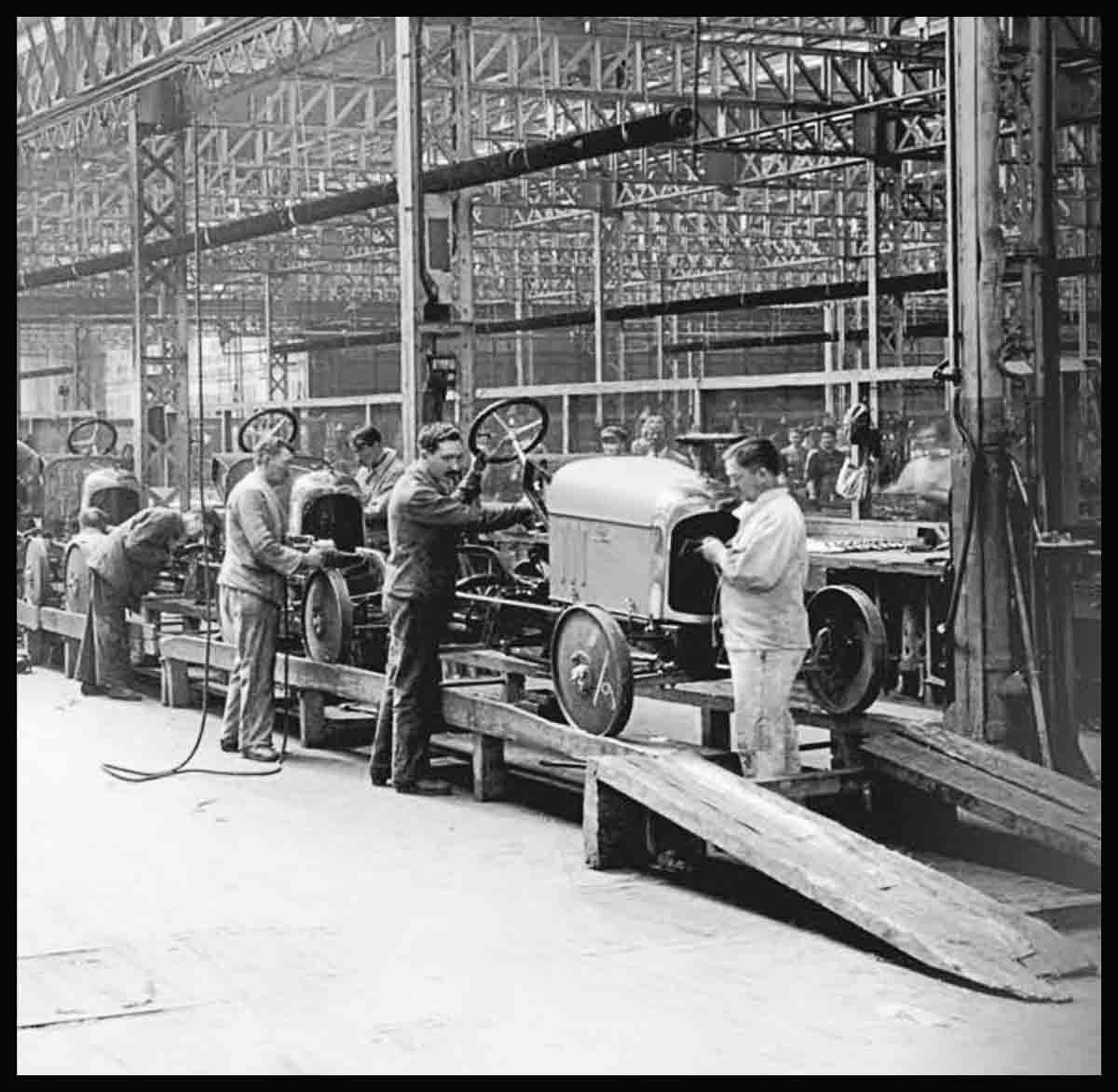
Great Marques—The Citroën Story
Parisian Andre Citroën started business life in the gear-making industry (this is obvious in the double chevrons of the helical gears in the marque’s logo). He amassed a fortune manufacturing shells in World War I and, having studied Henry Ford’s car-making methods, decided to spend his earnings setting up a car company.
“The ultimate in cars . . . becomes at once more spiritual.”
PHILOSOPHER AND WRITER ROLAND BARTHES ON THE CITROËN DS IN HIS BOOK MYTHOLOGIES, 1957
ALTHOUGH LATER CITROËNS would eventually develop into some of the most adventurous cars ever conceived for public sale, the original aim was a complete car at a low price.
In 1919 the Type A 10CV prototype elicited 16,000 orders because it had such an extensive specification and yet was less expensive than what most of the competition were offering. The Paris factory could barely cope with demand.
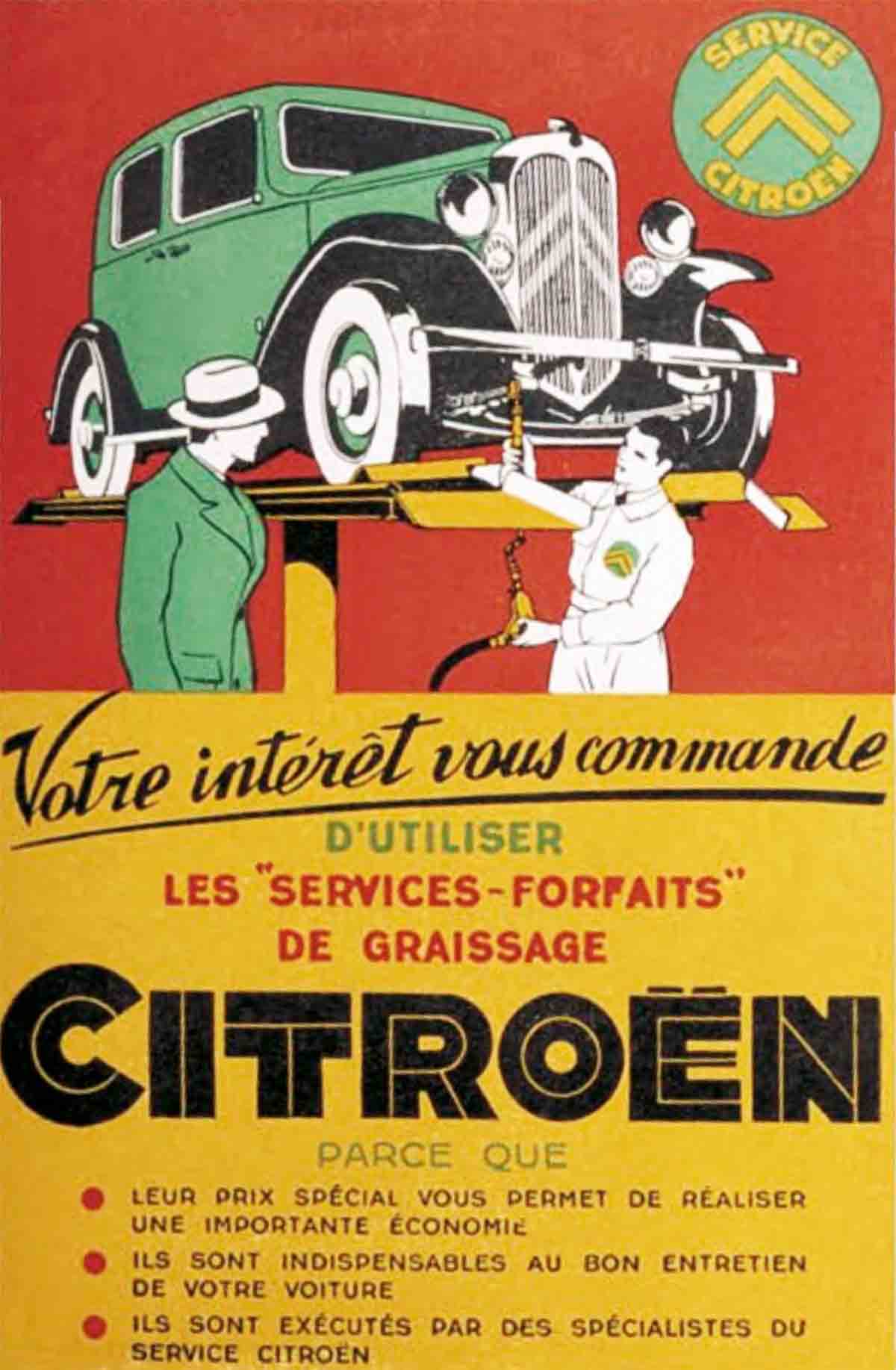
This vivid poster extolling the virtues of properly servicing a car was typical of Citroën’s enthusiastic use of marketing to promote its products.
In 1922 Citroën unveiled the tiny 5CV three-seater, with its 856 cc engine, aimed at the female driver on a limited budget. It was very user-friendly, the need for a starting handle obviated by an electric starter motor, and came in vivid colours. Sales took off. Andre Citroën’s genius as a marketer was confirmed and enhanced even further by selling toy Citroën cars, and lighting up the Eiffel Tower with 25,000 light bulbs. In a publicity stunt, the Citroën-Kegresse exploration vehicles crossed the Sahara Desert in 1922, gaining enormous attention.
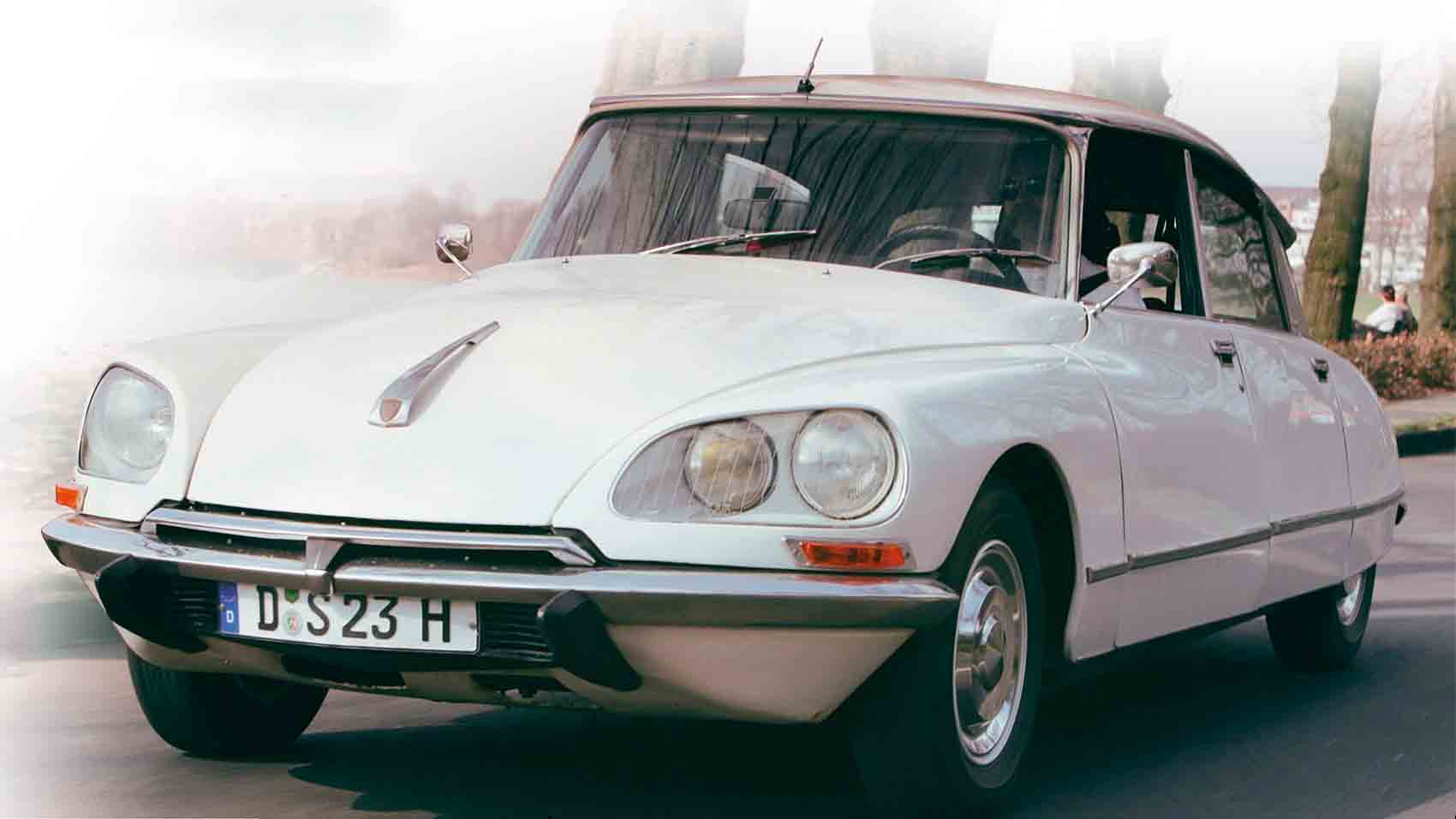
The ultimate version of the car, the DS23 had a 2.3-litre engine that, with fuel injection, was—at 141 bhp—the most powerful.
Before long there was a huge and complex range of Citroëns. However, the company decided to hit the technical innovation trail in 1934 by launching the 7CV. It had front-wheel drive, an integrated body/chassis structure, and rakish styling by a sculptor called Flaminio Bertoni—the soon-to-be-world-famous Traction Avant. The cost of bringing the car to market almost bankrupted the firm, and probably hastened Andre Citroën’s death in 1935. Had he survived, he would have learned that the car drove wonderfully. And, once some of its teething troubles had been ironed out, the Traction Avant proved to be enduringly popular, remaining on sale in various forms until 1957.
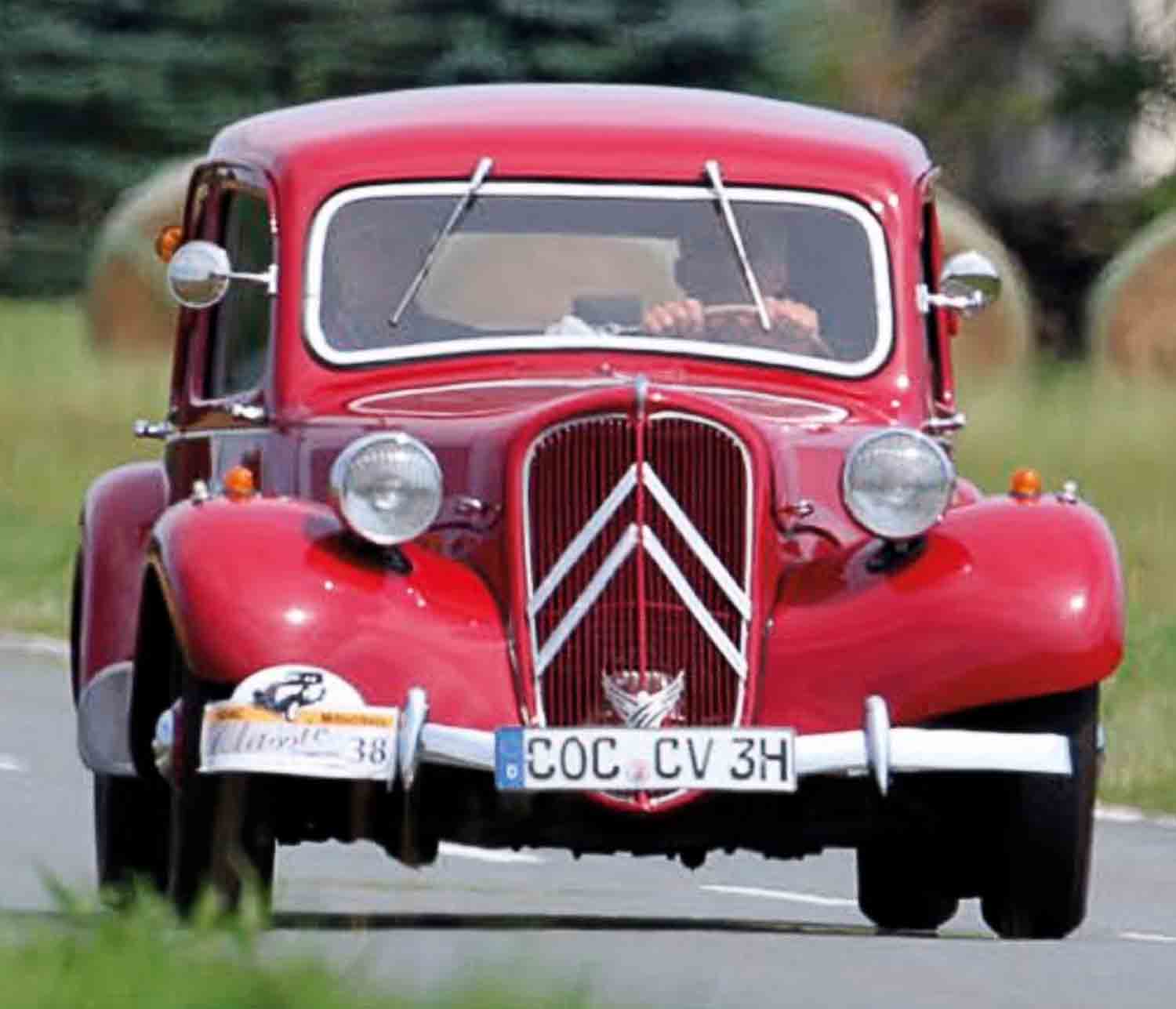
The brilliant front-wheel-drive range was in production from 1934 until 1957 in various version. The vehicle helped establish Citroën’s reputation for innovation.
Citroën’s next surprise was a car of its austere times, the 1948 2CV. This supremely basic, four-door saloon had suspension so forgiving that farmers could allegedly drive their eggs to market across ploughed fields and arrive with them undamaged. The 2CV’s twin-cylinder, air-cooled engine and front-wheel drive was unchanged throughout the car’s incredible 42-year lifespan.
By contrast, the DS19 of 1955 was as daring as the Space Age itself, again the visionary work of Flaminio Bertoni. It offered both self-levelling suspension and hydraulic actuation for everything from the steering to the clutch, all in a sharklike, streamlined body unlike anything seen before.
The Ami of 1962 was an amalgam of 2CV economy and sharp DS styling. There were also further developments on the 2CV theme, including the 1967 Dyane with its hatchback fifth door, and the Mehari of 1968, an open utility vehicle with all-plastic bodywork. In 1970, Citroën broke new ground with two new cars: the air-cooled, flat-four GS family car—European Car of the Year for 1971—and the futuristic SM with its 2.7-litre Maserati engine.
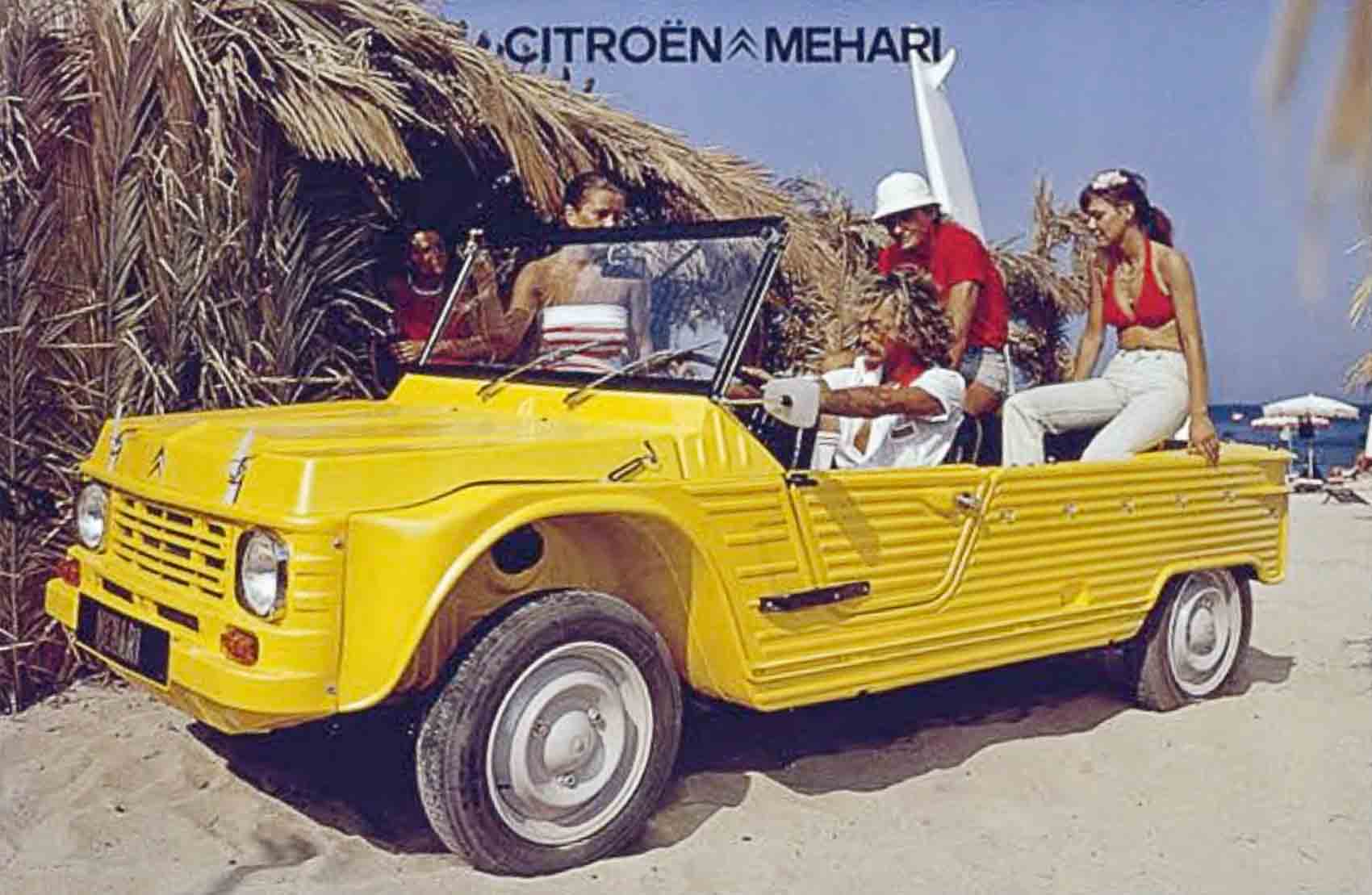
This plastic-bodied, open utility vehicle using 2CV mechanical parts was as chic as it was practical. Here, the advertising associated it with a relaxed, youthful lifestyle.
The 1960s and ’70s were a difficult time for Citroën, which, since the 1930s, had been owned by the tyre-maker Michelin. It acquired first Panhard, the cornerstone of the French motor industry, and then five years later Maserati. But by 1974 Citroën was nearly insolvent after ploughing money in an abandoned rotary-engine venture, which saw an undignified emergency takeover by Peugeot.
The CX, replacement for the DS, was felt to be the last “proper” Citroën. After its launch in 1974, much of the hardware inside models like the LN, Visa, BX, and AX was shared with equivalent Peugeot models. And that, of course, meant conventionality. However, the little AX set new standards for economy, and the XM and Xantia still exuded some of that characteristic Citroën “different-ness”, with their hydropneumatic suspension systems.
After some years of marketing rather bland products, Citroën went its own way with the 2009 DS3, and has since used the old DS name to launch a string of new models offering arch alternatives to other mainstream family cars.
It is a quote. The Classic Car Book – The Definitive Visual History 2016




